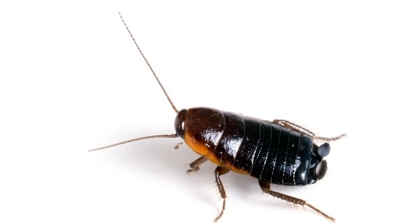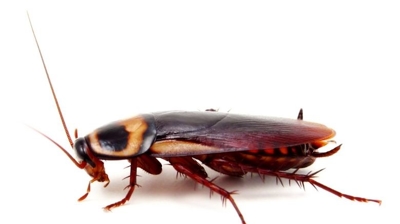
Red Velvet Ant Control Services

Are Red Velvet Ants Dangerous?
Red velvet ants are not typically considered dangerous to humans in the sense that they do not pose a significant direct threat. However, there are some aspects of their behavior and biology that can be potentially problematic, and they are known for their painful sting. Here are some of the risks associated with red velvet ants:
- Painful Sting: Red velvet ants are well-known for their painful sting. Their sting can cause intense localized pain, and some people describe it as one of the most painful insect stings they have experienced. This is one reason they are sometimes colloquially referred to as "cow killers." However, the pain is typically short-lived and not life-threatening. The intensity of the pain can vary from person to person, and some individuals may have more severe reactions or allergies to the venom.
- Self-Defense: Red velvet ants deliver their sting as a means of self-defense. They will sting when they feel threatened or are handled, so it's essential to exercise caution and avoid direct contact with them in the wild.
- Allergic Reactions: Like with any insect sting, there is a risk of allergic reactions in some individuals. An allergic reaction to a red velvet ant sting could include symptoms such as severe swelling, difficulty breathing, or anaphylactic shock. If you suspect you are allergic to insect stings or experience severe symptoms after being stung, seek immediate medical attention.
Red velvet ants are not dangerous in the same way that aggressive or venomous insects can be, but their sting can be extremely painful. It's important to respect their space in the wild and avoid handling them. If you are stung and experience a severe reaction, seek medical attention. For most people, the pain from a red velvet ant sting is temporary and localized, and it generally does not result in long-term harm.
What Do Red Velvet Ants Look Like?
Red velvet ants, which are actually wasps rather than ants, have a distinct and striking appearance. Their appearance can vary slightly depending on the species, but here is a detailed description of what they typically look like:
- Coloration: Red velvet ants are known for their vibrant and eye-catching coloration. The most common species are bright red or orange, but they can also be yellow, black, or a combination of these colors. This striking coloration serves as a warning to potential predators.
- Hairy Body: One of the most noticeable features of red velvet ants is their densely covered, fuzzy body. Their entire body is covered in fine, velvety hairs, which is where they get their common name. The hairs can make them appear quite soft and plush, almost like a tiny, brightly colored furry cushion.
- Segmented Body: Like other hymenopterans (the order to which wasps, bees, and ants belong), red velvet ants have a segmented body with three distinct parts: the head, thorax, and abdomen. However, these segments are often not very pronounced, and their body appears more streamlined and elongated.
- Antennae: Red velvet ants have straight, relatively long antennae that are often darker in color compared to their body. These antennae are used for sensing their environment and locating potential prey and hosts for their parasitic reproduction.
- Wings: In terms of wings, there is a significant difference between male and female red velvet ants. Males have wings and are capable of flight, while females are wingless, which makes them look more like large, fuzzy ants.
- Size: The size of red velvet ants can vary by species, but they are typically around 1/4 to 3/4 inches (6 to 19 mm) in length. They are relatively large compared to many other wasp or ant species.
- Stinger: Red velvet ants possess a powerful stinger, which they use for self-defense and as a means to paralyze the host insect in whose nest they lay their eggs. Their sting is well-known for being extremely painful and is one of the reasons they are sometimes called "cow killers."
Red velvet ants are known for their brilliant and conspicuous coloration, dense velvety hair covering, and the fact that they resemble large, wingless ants. Their appearance, with its combination of bright colors and fuzziness, is a classic example of warning coloration in the animal kingdom, indicating their potent sting to potential predators.
Where Are Red Velvet Ants Found?
Red velvet ants, despite their name, are not commonly found in urban or residential areas. They are typically encountered in specific natural habitats, often in more rural or wild locations. Here are some places where you might find red velvet ants:
- Desert and Arid Regions: Red velvet ants are often found in arid and desert environments. In North America, they are frequently spotted in states such as Arizona, Nevada, Utah, and other southwestern regions.
- Grasslands and Open Areas: These insects can also be found in grasslands, meadows, and open areas with sandy or loose soils. They prefer habitats where their host insects (such as ground-nesting bees) are present.
- Wooded Areas: Some species of red velvet ants can be found in forested regions. Look for them in clearings or along forest edges.
- Sand Dunes: In sandy coastal areas, especially near sand dunes, you may come across certain species of red velvet ants that have adapted to these environments.
- Under Rocks and Logs: Red velvet ants are often found in the soil, under rocks, logs, and other natural debris. They use these areas as hiding spots and nesting sites.
- Wildlife Refuges and Nature Reserves: Protected natural areas, such as wildlife refuges and nature reserves, can be good places to observe red velvet ants because these environments are less disturbed by human activities.
- During the Day: Red velvet ants are diurnal, which means they are active during the day. Look for them foraging for nectar or hunting for host nests during daylight hours.
- Spring and Summer: They are most active during the spring and summer months when their host insects are active and nesting.
Remember that red velvet ants are solitary wasps, and they are not found in colonies like social ants. If you are interested in observing them in the wild, exercise caution. While their sting can be painful, they are generally not aggressive and will only sting in self-defense. It's best to appreciate them from a safe distance and avoid handling them. Additionally, these insects can be important for local ecosystems as they help control the populations of their host insects.
What Do Red Velvet Ants Eat?
Red velvet ants, also known as Dasymutilla, have an adult diet that primarily consists of nectar from flowers. However, their larvae have a unique and somewhat gruesome dietary preference. Here's a comprehensive explanation of what red velvet ants eat at different stages of their life cycle:
- Adult Diet: Red velvet ants are primarily nectar feeders. They use their long, slender mouthparts to access the nectar from a variety of flowering plants. They are particularly attracted to the nectar of flowers with a tubular shape, such as those of the milkweed family (Asclepiadaceae) or other wildflowers. While nectar is their primary source of energy, they may also consume other sugary liquids if available, such as tree sap.
- Larval Diet: The larvae of red velvet ants have a very different and intriguing diet. Unlike the adults, they are parasitic, and their diet consists of the developing larvae or pupae of their host species. The female red velvet ant locates the underground nests of host bees or wasps and lays her eggs near or within the host nest. The red velvet ant larvae hatch and proceed to feed on the host's eggs or larvae, ultimately consuming the host insect. This parasitic behavior is crucial for their development.
The dietary habits of red velvet ants differ between their adult and larval stages. While the adults are flower visitors and nectar feeders, the larvae are specialized parasitoids, relying on the resources provided by the host insects for their survival and development. This parasitic relationship is a unique and intriguing aspect of their biology.
Red Velvet Ant Life Cycle
The life cycle of red velvet ants is a fascinating process, which, like other solitary wasps, involves several distinct stages. These stages are characterized by their parasitic behavior, which is central to the reproduction of these remarkable insects. Here is an overview of the life cycle of red velvet ants:
- Egg Stage: The life cycle begins when a female red velvet ant locates the underground nest of a host bee or wasp. Different species of velvet ants target specific host species. The female velvet ant lays her eggs near or within the host nest. These eggs are typically laid on or near the host's egg or larva.
- Larval Stage: Once the velvet ant eggs hatch, the larvae begin to consume the host egg or larva. This is a critical stage where the velvet ant larva depends entirely on the host for nutrition. The velvet ant larva undergoes several instars (developmental stages) as it grows. During this time, it continues to feed on the host.
- Pupal Stage: After fully consuming the host, the velvet ant larva spins a cocoon within the host nest or underground burrow. Inside the cocoon, the larva undergoes metamorphosis, transforming into a pupa.
- Adult Stage: When the metamorphosis is complete, the adult velvet ant emerges from the cocoon. Males and females differ in their appearance and behavior. Males are typically winged and have a more wasp-like appearance, while females are wingless and often resemble large, fuzzy ants. Male velvet ants are short-lived and primarily focus on finding a female to mate with. Female velvet ants, once they emerge, begin searching for host nests to lay their eggs, continuing the cycle.
The entire life cycle of red velvet ants is intricately tied to their parasitic behavior. The females rely on the resources provided by the host species for the development of their offspring. Their striking coloration serves as a warning to potential predators, as they can deliver a painful sting if threatened. While their sting can be intense, it's generally not lethal to humans and is primarily used for self-defense. The unique life cycle of red velvet ants makes them a captivating subject of study in the field of entomology.

Hear From Our Happy Customers
-
"Professional & Considerate"
I’m pleased with Miche services. Jarvis came today. Professional and considerate. Thank you!
- Judy B. -
"Great Communication"
Tech was on time, communication was great, and he accommodated my needs.
- Alonzo W. -
"Very Knowledgeable"
The tech that arrived was courteous, professional, and very knowledgeable. He was Great.
- Uerial I. -
"Exceeds Expectations"
I can’t say enough positive things about this company... The tech that came out, Jarvis went above and beyond my expectations. Thank you guys, I will continue using your services.
- Jake M. -
"Fantastic & Patient"
Jarvis was fantastic and patient. He answered my questions with an in-depth explanation and addressed all of my areas of concern. Would love for him to be my assigned tech going forward. Well done!
- Yonnette M. -
"Wonderful Service"
Wonderful service. Jarvis is great. Took care of everything I needed. Thank you!
- Henry P.



